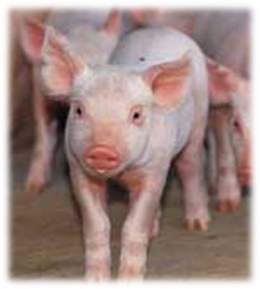- Piacenza
- PRONUTRIGEN Centro ricerca Nutrigenomica e proteomica
- Pubblicazioni Scientifiche
- Abstract e poster a convegni
- Transcriptomic analysis of the stress response to weaning in the piglets gut
Transcriptomic analysis of the stress response to weaning in the piglets gut

Work supported by Romeo and Enrica Invernizzi Foundation [2014]
Bomba L, Minuti A, Moisá SJ, Trevisi E, Eufemi E, Lizier M, Lucchini F, Rzepus M, Prandini A, Rossi F, Mazza R, Bertoni G, Loor JJ, Ajmone-Marsan P.
Abstract
Weaning is a critical period for piglets; usually it determines low feed intake, weight loss and increased mortality.
In this period the gut is subjected to morphological and histological changes, particularly a reduction of villous height and increase in crypt depth.
Antibiotics were used in the past to mitigate weaning problems, but recently they have been replaced with organic acids to avoid the selection and spread of antibiotic-resistant pathogenic strain.
Objectives: The objective of this study was to study the changes of gene expression induced by the weaning stress and the sorbic acid inclusion in the diet at this crucial period.
Methods: Sixteen female piglets were sacrificed during the experiment: 4 before weaning (T0) and 12 five days after weaning (T5).
The T5 group was split in two subgroups, one received a standard diet containing 5 g/kg of sorbic acid, and the other a standard diet in which organic acid was replaced by barley flour.
Gene expression was measured in the ileum using CustomArray™ 90K (CombiMatrix, Irvine, CA, USA) whole transcriptome microarrays.
The R limma package was used to identify genes differentially expressed (DEG) between diets and time points.
To examine the functional relationships among DEG, we used the Ingenuity Pathway Analysis tool version 8.0 (IPA) and Dynamic Impact Approach (DIA).
Microarray results were validated by real-time PCR.
Results: No significant difference was found between diets in term of gene expression, metabolism and histology.
Conversely, 205 genes were found differentially expressed between T0 and T5.
These mediate piglet stress response and metabolic adaptation to a new diet and environment at weaning stage.
IPA and DIA analyses indicate the activation of several important pathways related to immune and inflammatory response.
Conclusion: Transcriptome analysis well described the biological response to stress of piglets in this critical life stage and will be useful to test the effects of specific nutrients or additives (including pre- and pro-biotics) designed to mitigate the stress induced by the inflammatory response in the gut and to improve animal welfare.
![]() Poster
(1001,70 KB)
Poster
(1001,70 KB)
PRONUTRIGEN Centro ricerca Nutrigenomica e proteomica
- Chi siamo
- Aree di ricerca
- Servizi e Attività di ricerca industriale
- Pubblicazioni Scientifiche
- Scientific paper in riviste
- Abstract e poster a convegni
- Transcriptomic analysis of the stress response to weaning in the piglets gut
- A transcriptomic analysis of gut response to stress induced by weaning in piglets
- Effects of two different high-fat diets on the gut microbiota of adult mice
- Nutrigenomics: a high fat diet influences gut gene expression in a mouse model
- Piglet adaptation during weaning: some physiological changes and energy metabolism consequences
- Pubblicazioni su riviste con impact factor
- Seminari ed eventi
- Contatti
